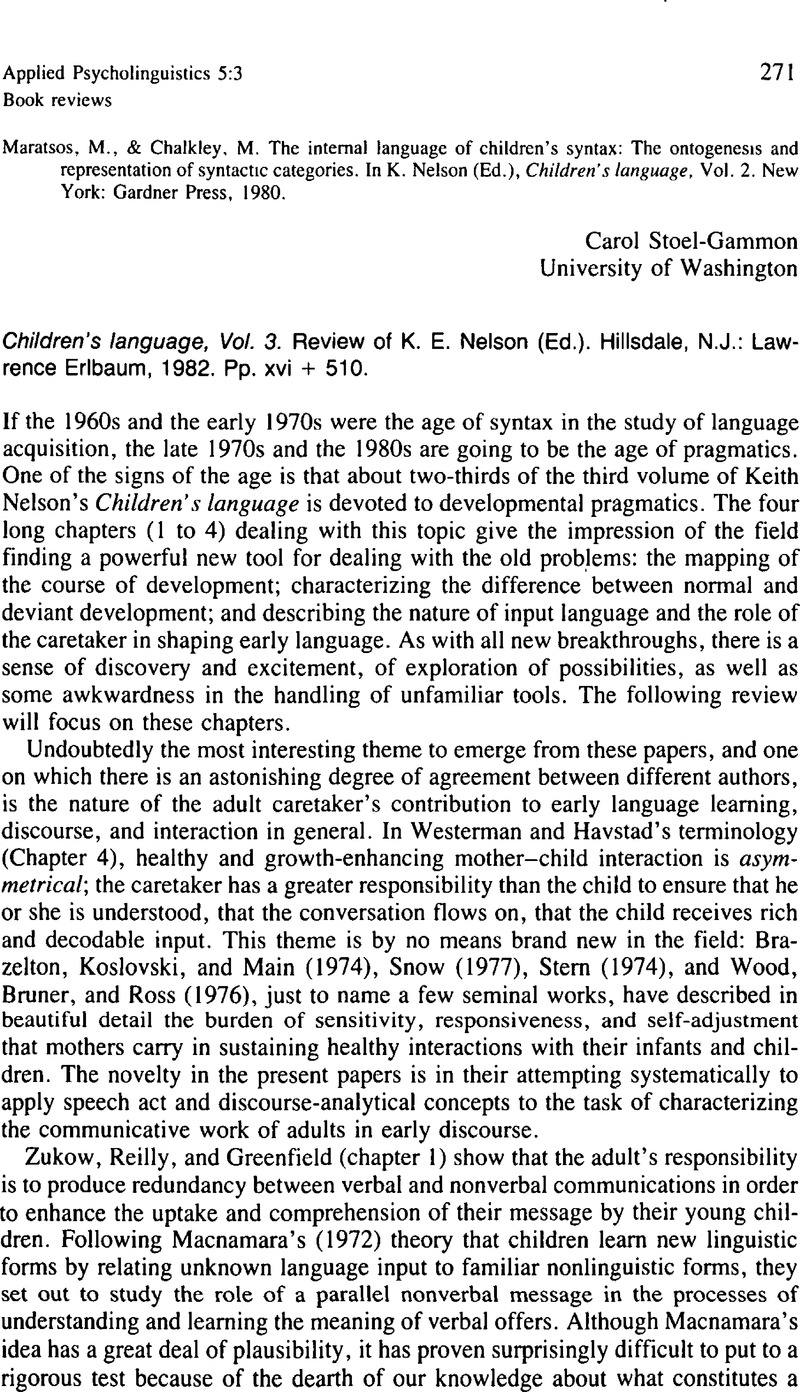Stern, D. N. Mother and infant at play: The dyadic interaction involving facial, vocal and gaze behaviors. In
Lewis, M. &
Rosenblum, L. A. (Eds.),
The effect of the infant on its caregiver.
New York:
Wiley-Interscience,
1974, pp.
49–
76.
Google Scholar 